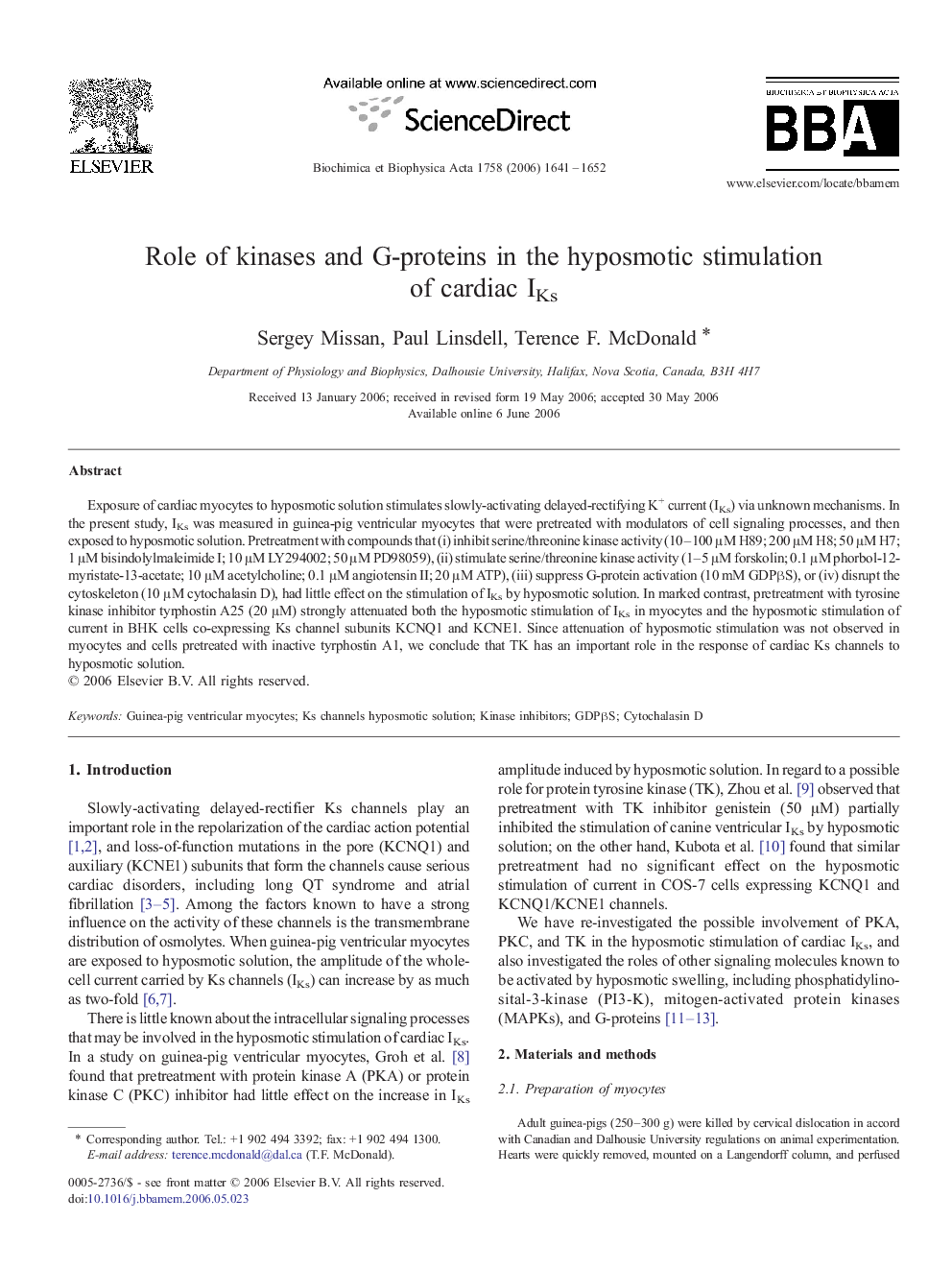| کد مقاله | کد نشریه | سال انتشار | مقاله انگلیسی | نسخه تمام متن |
|---|---|---|---|---|
| 1945998 | 1053283 | 2006 | 12 صفحه PDF | دانلود رایگان |

Exposure of cardiac myocytes to hyposmotic solution stimulates slowly-activating delayed-rectifying K+ current (IKs) via unknown mechanisms. In the present study, IKs was measured in guinea-pig ventricular myocytes that were pretreated with modulators of cell signaling processes, and then exposed to hyposmotic solution. Pretreatment with compounds that (i) inhibit serine/threonine kinase activity (10–100 μM H89; 200 μM H8; 50 μM H7; 1 μM bisindolylmaleimide I; 10 μM LY294002; 50 μM PD98059), (ii) stimulate serine/threonine kinase activity (1–5 μM forskolin; 0.1 μM phorbol-12-myristate-13-acetate; 10 μM acetylcholine; 0.1 μM angiotensin II; 20 μM ATP), (iii) suppress G-protein activation (10 mM GDPβS), or (iv) disrupt the cytoskeleton (10 μM cytochalasin D), had little effect on the stimulation of IKs by hyposmotic solution. In marked contrast, pretreatment with tyrosine kinase inhibitor tyrphostin A25 (20 μM) strongly attenuated both the hyposmotic stimulation of IKs in myocytes and the hyposmotic stimulation of current in BHK cells co-expressing Ks channel subunits KCNQ1 and KCNE1. Since attenuation of hyposmotic stimulation was not observed in myocytes and cells pretreated with inactive tyrphostin A1, we conclude that TK has an important role in the response of cardiac Ks channels to hyposmotic solution.
Journal: Biochimica et Biophysica Acta (BBA) - Biomembranes - Volume 1758, Issue 10, October 2006, Pages 1641–1652